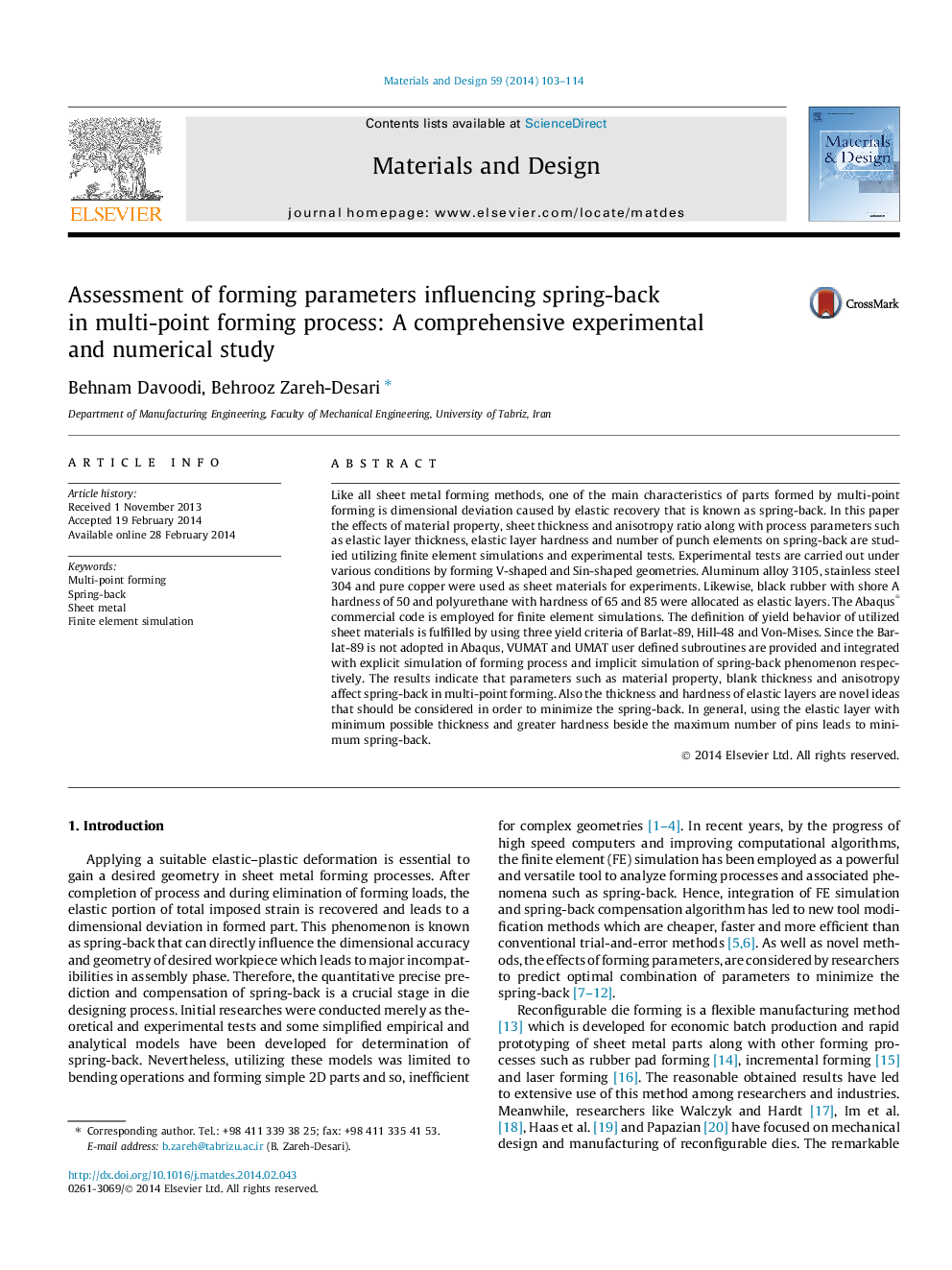| کد مقاله | کد نشریه | سال انتشار | مقاله انگلیسی | نسخه تمام متن |
|---|---|---|---|---|
| 7220859 | 1470338 | 2014 | 12 صفحه PDF | دانلود رایگان |
عنوان انگلیسی مقاله ISI
Assessment of forming parameters influencing spring-back in multi-point forming process: A comprehensive experimental and numerical study
ترجمه فارسی عنوان
ارزیابی پارامترهای تشکیل دهنده اثرگذار بر عقب در فرآیند تشکیل چند نقطه: یک مطالعه جامع و تجربی
دانلود مقاله + سفارش ترجمه
دانلود مقاله ISI انگلیسی
رایگان برای ایرانیان
کلمات کلیدی
چند نقطه تشکیل، بهار بازگشت ورق فلز، شبیه سازی عنصر محدود،
موضوعات مرتبط
مهندسی و علوم پایه
سایر رشته های مهندسی
مهندسی (عمومی)
چکیده انگلیسی
Like all sheet metal forming methods, one of the main characteristics of parts formed by multi-point forming is dimensional deviation caused by elastic recovery that is known as spring-back. In this paper the effects of material property, sheet thickness and anisotropy ratio along with process parameters such as elastic layer thickness, elastic layer hardness and number of punch elements on spring-back are studied utilizing finite element simulations and experimental tests. Experimental tests are carried out under various conditions by forming V-shaped and Sin-shaped geometries. Aluminum alloy 3105, stainless steel 304 and pure copper were used as sheet materials for experiments. Likewise, black rubber with shore A hardness of 50 and polyurethane with hardness of 65 and 85 were allocated as elastic layers. The Abaqus® commercial code is employed for finite element simulations. The definition of yield behavior of utilized sheet materials is fulfilled by using three yield criteria of Barlat-89, Hill-48 and Von-Mises. Since the Barlat-89 is not adopted in Abaqus, VUMAT and UMAT user defined subroutines are provided and integrated with explicit simulation of forming process and implicit simulation of spring-back phenomenon respectively. The results indicate that parameters such as material property, blank thickness and anisotropy affect spring-back in multi-point forming. Also the thickness and hardness of elastic layers are novel ideas that should be considered in order to minimize the spring-back. In general, using the elastic layer with minimum possible thickness and greater hardness beside the maximum number of pins leads to minimum spring-back.
ناشر
Database: Elsevier - ScienceDirect (ساینس دایرکت)
Journal: Materials & Design - Volume 59, July 2014, Pages 103-114
Journal: Materials & Design - Volume 59, July 2014, Pages 103-114
نویسندگان
Behnam Davoodi, Behrooz Zareh-Desari,
